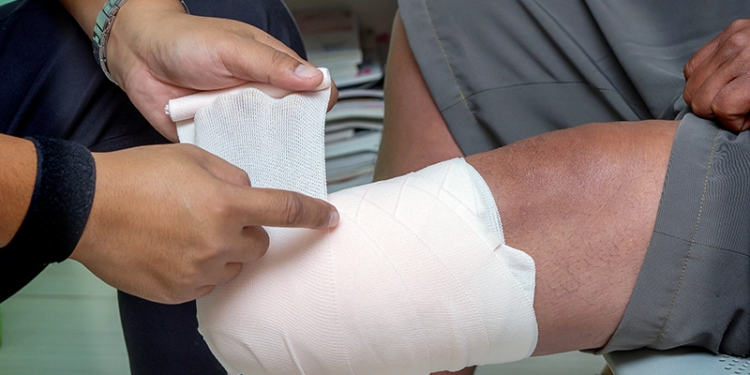A new, neurally controlled prosthetic arm was used by wounded warriors at the Walter Reed National Military Medical Center (WRNMMC), Bethesda, Maryland, for the first time in January 2012.

Pasquina noted the potential future of the MPL: Engineers seek to use electrodes underneath the skin for an electrical signal with much higher fidelity, and researchers look to explore other mechanisms to rewire nerves. Photograph courtesy of U.S. Navy; photograph by Sarah Fortney/Released.
The Modular Prosthetic Limb (MPL), which has nearly as much dexterity as a natural limb, 22 degrees of motion, and independent movement of fingers, was developed as part of a four-year program by the Johns Hopkins University Applied Physics Laboratory (APL), Laurel, Maryland, along with WRNMMC, and the Uniformed Services University of the Health Sciences (USU), Bethesda. On January 24, Air Force Tech Sgt. Joe Delauriers became the first patient at WRNMMC to begin using the MPL. Four months prior to being fitted, he was injured by an improvised explosive device (IED) blast in Afghanistan, which caused him to lose both his legs and part of his left arm.
Col. Paul Pasquina, MD, chief of orthopaedics and prosthetics at WRNMMC and director for the USU Center of Rehabilitation Sciences, explained that the nine-pound prosthesis is controlled by surface electrodes, which pick up electric signals generated by the muscles underneath the skin, then convert those patterns in electrical signals into a robotic function. Before being fitted to use the device, users must first go through “training” using a virtual integrated environment (VIE), which records an individual’s muscle movements. By collecting muscle data, the MPL is then suited for the individual.
“The hand in itself is so important in terms of one’s independence,” said Pasquina. “Your ability to dress yourself, feed yourself, do self-grooming, and hygiene is extremely important. Many of our injured service members were highly functioning, highly independent, had a great amount of responsibility. To now find themselves in a situation where they have an impairment or disability, that makes them less independent is something that not only affects them physically, but affects them emotionally.”
Pasquina added that he’ll continue his efforts to make this technology available to all service members and the population at large.




